As an engineer who has spent his entire career in the world of packing machinery, I’ve seen the industry from every angle. I’ve worked on the factory floor, designed machines, and eventually built my own company, SHJLPACK. I’ve watched steel mills struggle with the same pressures year after year: volatile costs, aging equipment, and the constant need to do more with less. You’re likely facing these exact challenges in your own plant right now, whether you're in the industrial heartland of Spain or the manufacturing powerhouse of Mexico. The pressure to protect your margins while improving output is immense. You know that a single bottleneck, especially at the final packaging stage, can bring your entire operation to its knees. This isn't just a technical problem; it's a strategic one that impacts your bottom line. The solution lies in a place many overlook: rethinking your coil packaging line not as a cost center, but as a hub for automation and efficiency.
The core drivers for the rising demand for coil packaging automation in Spanish-speaking markets, from Bilbao to Monterrey, are the critical needs to reduce high operational costs, increase production reliability from aging lines, meet stringent environmental regulations, and achieve digital transformation for a competitive advantage. Steel leaders are realizing that automated packaging is no longer a luxury but a fundamental strategy for improving efficiency, stability, and profitability.
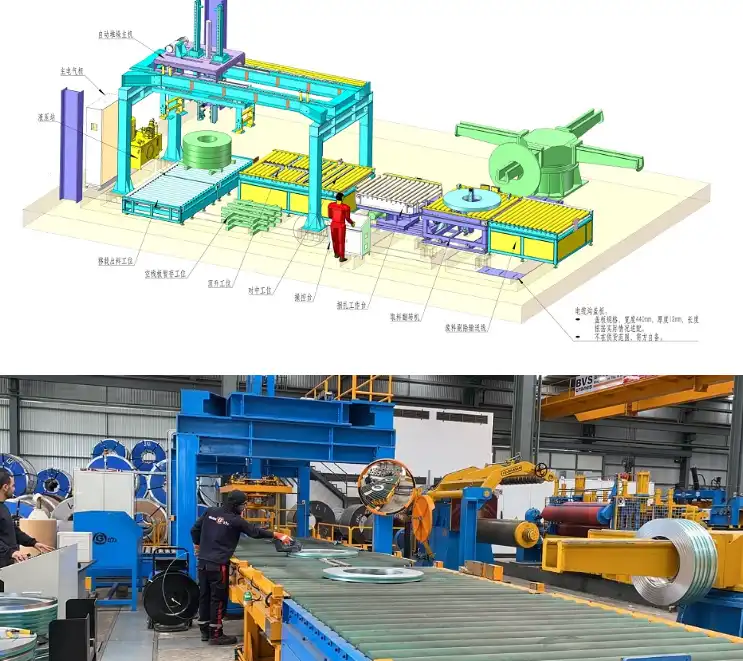
I’ve had many conversations with steel mill owners like Javier Morales in Monterrey. They are sharp, forward-thinking leaders. They don't just ask about machine speeds and feeds. They ask bigger, more strategic questions. They want to understand the real return on investment and how a new piece of equipment fits into their long-term vision for a smarter, more resilient factory. These are not simple questions, and they deserve detailed answers. Let's break down the most common and critical questions I hear from leaders across the Spanish-speaking world. We will look at how automation provides the powerful answers they are searching for.
How Can Automation Tackle Rising Energy and Labor Costs?
You regularly review your plant's financial reports. Two line items always stand out and cause concern: energy and labor. They are unpredictable and seem to only go up. This volatility makes it incredibly difficult to forecast your production costs accurately and protect your hard-won profit margins. Every time the price of electricity spikes, you see the profitability of your products shrink. At the same time, finding and retaining skilled workers to operate manual packaging stations is becoming a bigger challenge every day. It feels like a constant squeeze from both sides, limiting your ability to invest and grow. The solution is to directly confront these costs with technology. A modern, automated coil packaging system is engineered from the ground up to minimize these two expenses. It uses highly efficient motors and smart, on-demand power usage to cut down on electricity consumption. It also automates the repetitive, labor-intensive tasks, giving you predictable operational costs and freeing your valuable team members for more complex roles.
Automation directly counters rising costs by replacing energy-hungry, outdated equipment and minimizing the dependence on manual labor. Modern automated packaging systems utilize energy-efficient technologies like variable frequency drives (VFDs) and optimized wrapping cycles to drastically reduce power consumption per coil. Simultaneously, they automate physically demanding and repetitive jobs, which lowers direct labor expenses and reduces costs associated with human error and safety.
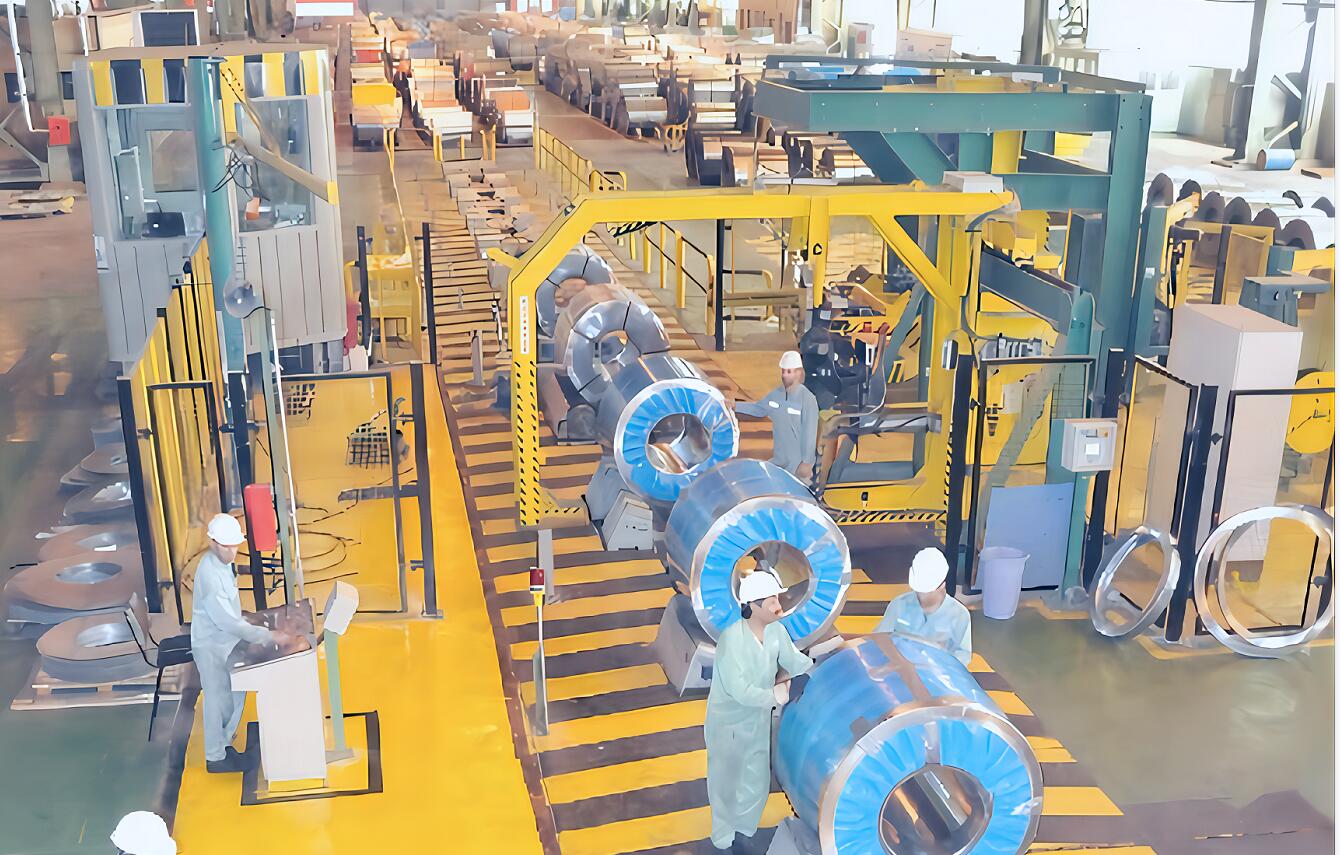
Dive Deeper: The Real ROI of Automation
When we talk about automation, the conversation often starts with reducing headcount. But the true financial impact is much broader and deeper, especially concerning energy and operational efficiency. A strategic leader like Javier doesn't just see fewer workers; he sees a more stable and predictable cost structure.
Unpacking Energy Efficiency
Many older packaging lines, especially those over 15 years old, rely on inefficient hydraulic power packs. These systems run continuously, consuming a large amount of power even when the machine is idle between coils. They are also prone to leaks and require regular, costly maintenance. In contrast, modern automated systems are all-electric. They use servo motors and Variable Frequency Drives (VFDs). A VFD ensures the motor draws only the power it needs for a specific task, whether it's turning the coil or moving a shuttle. Power consumption during idle time is nearly zero. This shift from constant power draw to on-demand power usage can lead to energy savings of 30-50% for the packaging station alone. When you are processing millions of tons of steel a year, these savings add up to a significant number on your P&L statement.
The Full Cost of Manual Labor
The cost of labor isn't just a salary. It includes recruitment, extensive training, and benefits. More importantly, manual and semi-automated processes introduce risks. There's the risk of safety incidents, which carry huge direct and indirect costs. There is also the risk of human error. A coil wrapped improperly can lead to rust or damage during transit, resulting in a customer claim. A mislabeled coil can cause a major logistical headache. Automation removes this variability. It performs the task the same way, every single time. This consistency reduces product damage, eliminates labeling errors, and creates a safer work environment. The "cost" of labor is not just the wage; it's the cost of inconsistency and risk that automation mitigates.
| Metric | Old Semi-Automated Line | Modern Automated Line | Impact |
|---|---|---|---|
| Energy Consumption | ~5-7 kWh/coil | ~2-3 kWh/coil | >50% Reduction |
| Labor Requirement | 2-3 Operators/Shift | 1 Supervisor/Line | Lower Labor Cost & Risk |
| Packaging Errors | 1-2% of Coils | <0.1% of Coils | Fewer Customer Claims |
| Training Time | Weeks | Days | Faster Onboarding |
I remember a client in Mexico whose situation was very similar to Javier's. They were focused on a goal of reducing overall operating costs by 8%. We started by analyzing their packaging line. By replacing two older, hydraulic-based machines with a single automated electric line, they not only reallocated four operators to other areas but also tracked a 40% reduction in energy consumption for that specific process. It was a clear, measurable win that contributed directly to their larger strategic goal.
Why Is Upgrading Aging Packaging Lines a Strategic Move, Not Just a Cost?
Your packaging line has been in service for over 15 years. It’s a piece of equipment you know well, but lately, it has become a source of constant worry. Unplanned breakdowns are happening more often. Finding the right spare parts is a long and frustrating process. Every time the line goes down, it sends a shockwave through your production schedule, causing delays and stress for your entire team. This situation is frustrating. A failure in the final packaging step can create a massive bottleneck, forcing your expensive slitting lines or rolling mills to stop. This doesn't just halt production; it creates a backlog of unpackaged coils that clogs up your floor space, frustrates your logistics team, and puts customer delivery dates at risk. You feel like you're patching up a problem instead of solving it. Investing in a new, automated line is more than just a maintenance expense. It's a strategic decision to invest in reliability and throughput. It is about ensuring your final, critical step can not only keep up with but also enhance the productivity of your entire operation, unlocking your plant's true potential.
Upgrading an aging packaging line is a strategic move because it directly resolves a critical production bottleneck, which in turn boosts overall plant capacity utilization and reliability. A modern automated line offers higher throughput, incorporates predictive maintenance capabilities, and ensures consistent performance. This transforms the packaging stage from a reactive, problem-prone area into a proactive, stable asset that supports higher efficiency goals and reliably meets market demand.
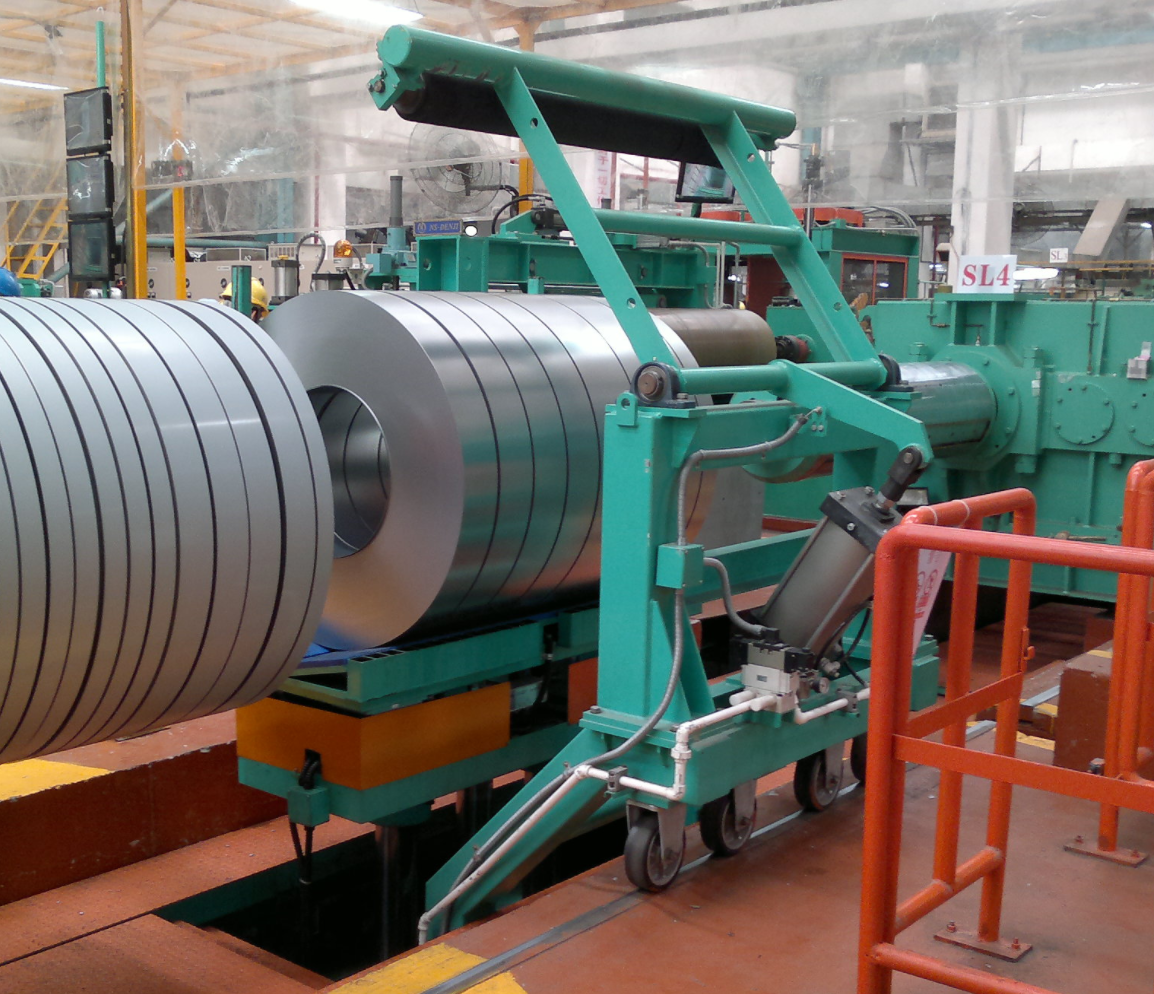
Dive Deeper: From Bottleneck to Throughput Enabler
In any manufacturing process, there is always one step that limits the speed of the entire system. This is the bottleneck. In many steel mills I visit, particularly those that have invested heavily in their primary production lines, the bottleneck is often the old, slow, and unreliable packaging equipment at the very end.
The Ripple Effect of Downtime
When an old packaging line fails, the cost is far greater than just the price of the spare part and the mechanic's time. The real cost is the lost opportunity. Let's quantify it. If your slitting line produces 50 tons per hour and your profit is $30 per ton, every hour of downtime on the packaging line costs you $1,500 in lost profit, not to mention the wages of the idle crew. If this happens several times a month, the numbers become staggering. Furthermore, it creates a cascade of problems:
- Increased Work-in-Progress (WIP): Unpackaged coils pile up, taking up valuable floor space and increasing the risk of damage.
- Schedule Disruption: Production schedules are thrown into chaos, making it difficult to plan efficiently.
- Risk to Customer Relationships: Late shipments can damage your reputation and lead to financial penalties.
The Power of Predictive Maintenance
One of the most significant strategic advantages of a new automated line is the move from a reactive to a predictive maintenance model. This is something leaders like Javier, with their focus on achieving 95% uptime, understand very well. Older machines break, and then we fix them. Modern systems are equipped with a network of IoT sensors that monitor the health of critical components in real-time. These sensors track motor temperature, vibration, power consumption, and cycle counts. This data is fed into a control system that can alert maintenance teams to a potential problem before it causes a failure. An alert might say, "Motor 3 shows increased vibration. Recommend inspection within 48 hours." This allows you to schedule maintenance during planned downtime, rather than having the machine fail during a critical production run.
| Feature | Old Line (Reactive) | New Line (Predictive) | Strategic Advantage |
|---|---|---|---|
| Maintenance | Failure-driven | Data-driven alerts | Maximized Uptime |
| Throughput | Limited by machine speed & reliability | Consistent, predictable output | Increased Plant Capacity |
| Spare Parts | Hard to find, long lead times | Standardized, readily available | Reduced Downtime Duration |
| Data | None | Real-time health monitoring | Proactive Management |
I worked with a steel service center in Bilbao that faced this exact issue. They had a state-of-the-art slitter but were constantly waiting for their old packaging line to catch up. After we installed a fully automated line with a coil car and down-ender, they eliminated the bottleneck. More importantly, the predictive maintenance alerts gave their team the confidence to run the line at full capacity. Within six months, they increased their total shipped tonnage by 15% without making any changes to their primary slitting line. They didn't just buy a machine; they bought reliability and unlocked hidden capacity.
What Role Does Smart Packaging Play in Digital Transformation and Compliance?
You hear the phrases "digital transformation," "Industry 4.0," and "ESG compliance" in every meeting. Your executive board wants to see a clear strategy, and government regulators are introducing tougher environmental rules with real financial penalties. It’s easy to feel overwhelmed and unsure of where to begin, especially in a traditional, physical part of the business like packaging. The worry is real. You see your competitors using data to make smarter decisions, and you feel the pressure to keep up. At the same time, the burden of proving your compliance with environmental standards is growing. These challenges might seem abstract, but they have direct impacts on your business's competitiveness and financial health. A modern, automated packaging line is a surprisingly powerful tool to address both. It is the final checkpoint where your product is prepared for the outside world. By integrating this "smart" packaging line with your plant's MES (Manufacturing Execution System), it becomes a critical data source, enabling full traceability and generating the reports you need for both intelligent management and easy compliance.
Smart packaging lines are a cornerstone of digital transformation and environmental compliance in the steel industry. By integrating with plant-wide systems like MES and ERP, they automatically capture and transmit critical data for every coil, including its unique ID, exact weight, dimensions, and the specific packaging materials used. This creates a complete digital record that enables full product traceability for quality assurance, provides real-time production visibility for managers, and generates accurate material usage reports required for environmental and ESG compliance.
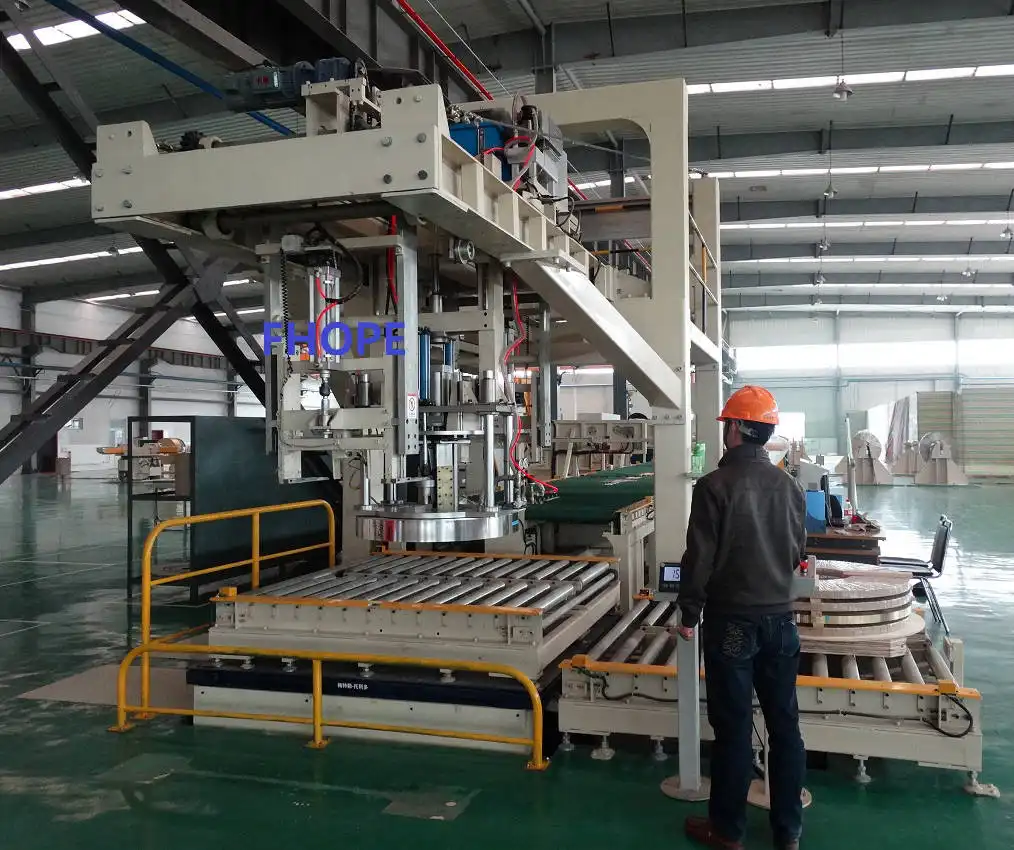
Dive Deeper: Turning Packaging into a Data Hub
For a forward-thinking leader like Javier, who aims to deploy MES, IoT, and big data platforms, the packaging line is not an endpoint. It is a critical data node. Every coil that passes through it is an opportunity to gather valuable information that can be used to optimize the entire operation.
Creating the Coil's "Digital Birth Certificate"
When a coil arrives at an automated packaging station, it is identified by its barcode or production ID. The system then performs a series of actions and records them all.
- Identity Confirmation: The system scans the coil ID and pulls its data from the MES.
- Physical Measurement: Integrated scales capture the precise weight. Sensors can confirm the diameter and width.
- Process Logging: The system records exactly how the coil was packaged. Which VCI paper was used? How many layers of stretch film were applied? What was the wrapping tension?
- Final Labeling: A new, comprehensive label is printed and applied, containing all this information in human-readable and barcode formats.
This entire process creates a "digital birth certificate" for the finished product. This data is then sent back to the MES and ERP in real-time. It's no longer a manual entry on a clipboard, prone to errors. It's an accurate, automated, and instantaneous record that can be used by your quality, logistics, and sales teams.
Simplifying Environmental and ESG Reporting
Increasingly, companies are required to report on their environmental impact, including the consumption of materials like plastics (stretch film) and paper. Manually tracking this is a nightmare. A smart packaging system makes it simple. Because the system knows exactly how much stretch film and paper it applies to every single coil, it can provide precise consumption reports. You can generate a report for a day, a week, or a year with a few clicks. This makes regulatory reporting easy and accurate. Furthermore, this data allows you to optimize. If you find you are using too much film on a certain type of coil, you can adjust the packaging recipe in the system to reduce waste, saving money and improving your environmental footprint. This is a practical step in your ESG journey.
| Data Point | Manual Process | Smart Packaging System | Advantage |
|---|---|---|---|
| Coil Weight | Manual entry from scale | Automatically captured & sent to MES | 100% Accuracy, No Errors |
| Packaging Material | Operator estimate/guess | Precise usage measured per coil | Accurate Costing & Waste Reduction |
| Production Time | Rough time logs | Timestamped at every step | Real-time visibility of throughput |
| Compliance Data | Manual data compilation | Automated report generation | Drastically Reduced Admin Effort |
This is the essence of digital transformation. It's not about technology for its own sake. It's about using technology to get accurate, real-time data that allows you to run your business more efficiently, make smarter decisions, and easily meet your external obligations.
How Does a True Partnership Go Beyond Just Supplying a Machine?
You have experience buying industrial equipment. Too often, the process is purely transactional. The salesperson makes a compelling pitch, your team signs the purchase order, and the machine is delivered. The supplier's technicians get it installed and running, and then communication fades. When you need support a year later, or when you want to discuss how to optimize the machine for a new product, it feels like you're starting from scratch with a customer service agent who doesn't know you or your business. This transactional approach can leave you feeling isolated. You've made a significant capital investment, and now you are solely responsible for its long-term performance and ROI. But you didn't just buy a piece of hardware; you invested in a critical capability for your plant. You need more than a supplier; you need a partner who remains engaged. A true partner, the kind of expert Javier seeks, doesn't disappear after the check clears. They work with you as an extension of your own engineering team, starting with in-depth analysis and collaborative design, and continuing through installation, training, and proactive long-term support.
A true partnership in the packaging machinery industry transcends the sale by delivering continuous, collaborative support that aligns with the client's long-term strategic goals. It begins with a deep understanding of the client's challenges and involves customized equipment design, seamless on-site integration, comprehensive training for operators and maintenance staff, and a commitment to proactive after-sales service. This approach is built on sharing knowledge and expertise to ensure the client not only gets a machine but achieves maximum return on their investment and meets their broader business objectives.
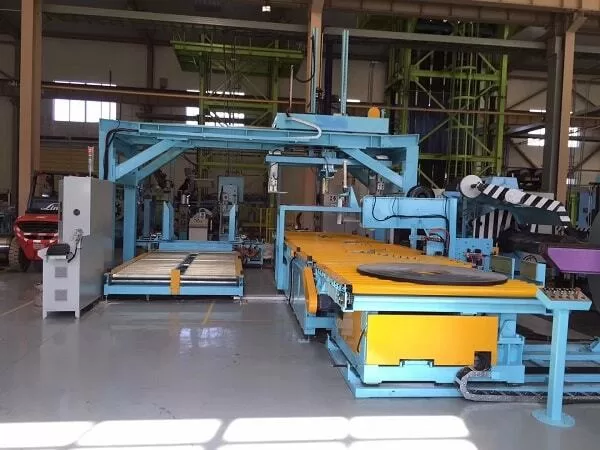
Dive Deeper: Building Success Together
I founded SHJLPACK on a simple principle born from my own journey. I started my career as an engineer on the factory floor. I know the frustration of dealing with equipment suppliers who don't understand your operational reality. When I built my own company, I was determined to be the kind of resource I wished I had back then. This philosophy shapes how we approach every project. It's not about selling a machine from a catalog; it's about building a solution with a partner.
Phase 1: Collaborative Design and Consultation
Our work doesn't start with a quote. It starts with questions. We want to understand your goals. Are you trying to solve a bottleneck like the client in Bilbao? Are you focused on a cost-reduction target like Javier in Monterrey? We analyze your plant layout, your material flow, and the specific characteristics of your coils. We discuss your digital transformation roadmap and how our equipment needs to integrate with your MES. This consultation phase ensures that the machine we design is not a generic solution but a piece of equipment tailored to solve your specific problems and help you achieve your specific goals. It's a process of co-creation.
Phase 2: Beyond Installation to Empowerment
Installation and commissioning are just the beginning. The most important part of our job is knowledge transfer. We don't just train your operators on which buttons to push. We train your maintenance team on how the machine works, how to troubleshoot common issues, and how to use the predictive maintenance data. We want to empower your team to be self-sufficient. But our support doesn't end there. We provide long-term service that includes remote diagnostics, where our engineers can log into your machine (with your permission) to help diagnose a problem. We ensure you have a plan for critical spare parts. We become your go-to resource for anything related to your packaging line.
| Aspect | A Standard Supplier | A Strategic Partner | The SHJLPACK Way |
|---|---|---|---|
| Focus | Making the sale | Achieving the client's goal | Your success is our success |
| Process | Standard product offering | Customized solution design | Deep consultation and co-creation |
| Support | Reactive, ticket-based | Proactive, relationship-based | Empowerment through training and long-term care |
| Goal | Ship a machine | Maximize client ROI | Build a lasting, trust-based relationship |
This is what it means to be a "Total Solution for Wrapping Machine." It’s a promise that goes far beyond the hardware. It's a commitment to being a true partner on your journey to building a more efficient, reliable, and profitable operation.
Conclusion
Automating your coil packaging is not an expense; it's a strategic investment. It drives efficiency, ensures stability, and future-proofs your operations in a competitive global market.





